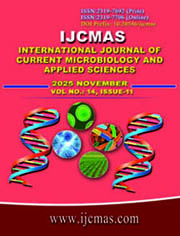Evaluation of Disinfectants by Surface Challenge test as per USP 1072 standard at Pharma Company Laboratory, India
Infiniti Lines, Mumbai, India
*Corresponding author
Abstract:
Cleaning and disinfection of surfaces are essential steps for maintaining the cleanliness of pharmaceutical manufacturing operations. To validate the efficacy of disinfectants used in disinfection procedure, in order to reduce surface contaminations, we tested invitro the action of commercial disinfectants. Surface Challenge testing has been carried in a Pharmaceutical manufacturing laboratory in accordance with the United States Pharmacopeia <1072> Disinfectants and Antiseptics protocol. Surface Challenge tests assess the effectiveness of the selected disinfectant against surface-adhered microorganisms. The test organisms used include standard strains mentioned in USP <1072>. Our results showed a bactericidal, fungicidal, and sporicidal efficacy coherent to the acceptance criteria suggested by United States Pharmacopeia <1072>. The correct implementation of our cleaning and disinfection procedure, respecting stipulated concentrations and contact times, led to a reduction of more than 4 Log10 for all microorganisms used. The qualification of procedure was carried out on a screening test in order to measure effectiveness of the disinfectants, chosen according to their principle of action.
Keywords: Disinfection, , United States Pharmacopeia <1072>, qualification, Log10 reduction, contamination
References:
- Abraham, Z. (2010). Disinfectant Qualification – A Multifaceted Study, Microbiologics.
- Rottjakob, D. (2013). Disinfection qualification testing—considerations for the aseptic and cleanroom manufacturing environment.
- Russell, Hugo & Ayliffe's, (2004). Principles and Practice of Disinfection, Preservation & Sterilization, 4th ed, Blackwell Publishing, chapter 7: 220 – 237.
- Sandle, T. (2016). The CDC Handbook: A Guide to Cleaning and Disinfecting Cleanrooms, 2nd Edition, Grosvenor House Publishing: Surrey, UK
- Sandle, T. (2017). The European approach to disinfectant qualification, La Vague: 45 – 48.
- Severs, Y. D. and Lamontagne, M. C. (2002). A literature review of disinfectants, Technical Report, Defence R&D Canada – Toronto.
- Testing of Disinfectants, PharmaState Academy, 2017.
- United States Pharmacopeia Forum USP <1116> Microbiological evaluation of clean rooms and other controlled environmets. 2012
- United States Pharmacopoeial Convention, Inc. United States Pharmacopeia 28- National Formulary 23. Rockville, MD: US Pharmacopoeial Convention, Inc.
- USP General Chapter <1072> “Disinfectants and Antiseptics”, (2017): 3792-3795.
- Van Kilgeren, B., Koller, W., Bloomfield, S.F., Bohm, R., Cremieux, A, Holah, J., Reybrouck, G. and Rodger, H-J., (1998). ‘Assessment of the efficacy of disinfectants on surfaces’, International Biodeterioration and Biodegradation, 41:289-296. https://doi.org/1016/S0964-8305(98)00020-1
- Vellutato Jr. Developing compliant and effective cleaning and disinfection methodologies in GMP controlled environments. Cleanrooms august, 2006.
- Vina, P., Rubio, S. and Sandle, T. (2011). ‘Selection and Validation of Disinfectants’, in Saghee, M. R., Sandle, T and Tidswell, E. C. (Eds.) (2011). Microbiology and Sterility Assurance in Pharmaceuticals and Medical devices, New Delhi: Business Horizon: 219 – 236.
- Wilfried, P. (2004). Directory of Microbicides for the Protection of Materials – A Handbook, Kluwer Academic Publishers.
Download this article as 
How to cite this article:
Imran Memon, Naushin I. Memon, Surjeet Samanta and Rahul Mali. 2025. Evaluation of Disinfectants by Surface Challenge test as per USP 1072 standard at Pharma Company Laboratory, India.
Int.J.Curr.Microbiol.App.Sci. 14(11): 195-210. doi:
https://doi.org/10.20546/ijcmas.2025.1411.020
 Citations
Citations



 National Academy of Agricultural Sciences (NAAS)
National Academy of Agricultural Sciences (NAAS) 




